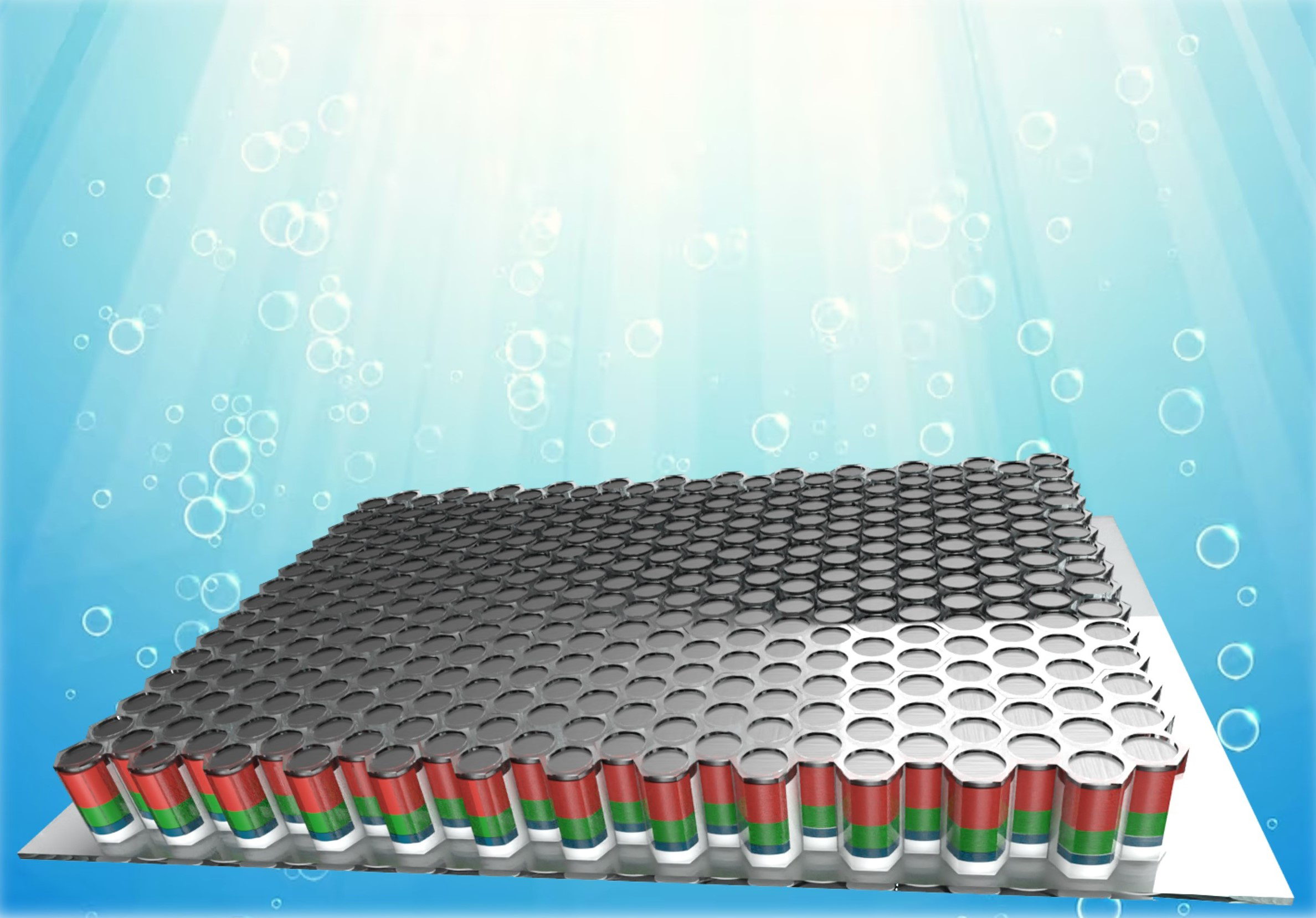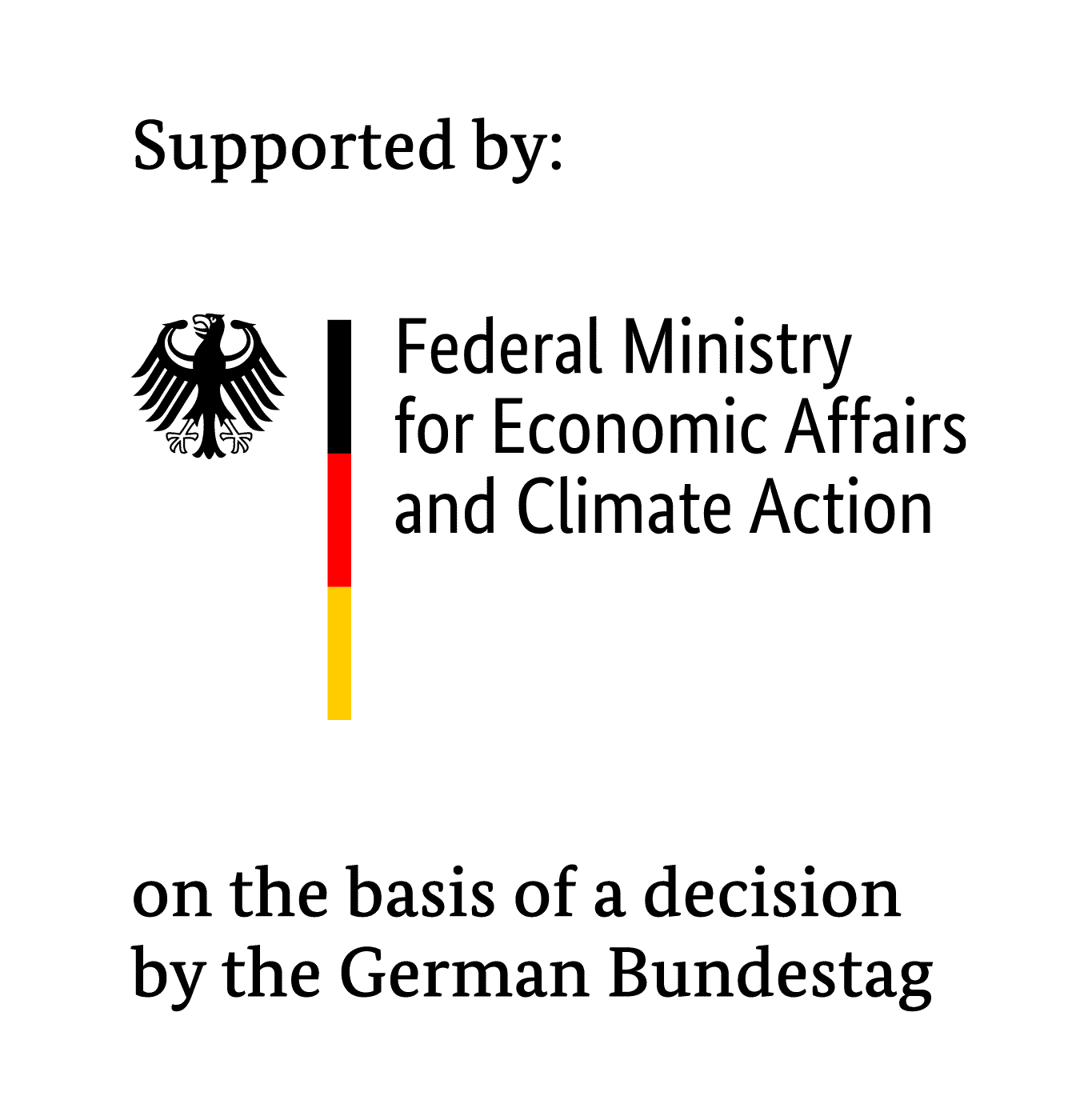Reactors for hydrogen production - from laboratory set-up to demonstration plant
In cooperation with seven partners from industry and research, the Fraunhofer Center for Silicon Photovoltaics CSP in Halle (Saale) is scaling up climate-neutral photoelectrochemical generators separating hydrogen from water to commercial capacity.


Germany is to become climate-neutral by 2045. This was decided by the German government with the amendment to the Climate Protection Act. However, to reduce the use of fossil fuels and increase the share of renewable energies, fundamental changes will still have to be made, especially in the energy, heating, agriculture, and transport sectors as well as in industry. Hydrogen is a critical factor in this process.
So far, electrolysis, the process of using electricity to split water into hydrogen and oxygen, is the predominant method used. However, as the generation capacity of wind and solar power plants needed to produce green hydrogen are limited, the National Academy of Sciences recommends the further development of alternative processes. Mentioned in this context is artificial photosynthesis, or photoelectrochemical water splitting, which produces hydrogen from sunlight and water. Currently, this process has not yet reached technical maturity and cannot yet be profitably run.
This is where the project "NanoPEC - Efficient, stable and application-ready reactors for photoelectrochemical water splitting based on nanostructured absorbers" comes in. Fraunhofer CSP, in cooperation with Gebr. Schmidt GmbH and five other partners from industry and science, will develop the already patented photoelectrochemical technology of SunHydrogen Inc. from lab to pilot scale. In the process, photoelectrodes are formed by nanometer-sized semiconductor-based tandem solar cells embedded in aluminum oxide. "A manufacturing technology for electrodes and modules will be developed based on the already existing equipment. The goal here is to realize automated manufacturing at volumes of 1,000-units,” says Dr. David Adner, scientist, and project manager in the Group "Diagnostics and Metrology Solar Cells" at Fraunhofer CSP.
For this purpose, the current manual production, which allows only low quantities in fluctuating quality, is to be further developed into an automated production technology, explains Dr. Christian Hagendorf, Group Manager “Diagnostics and Metrology Solar Cells". New solutions must also be found for metrology, which is currently still handled by other technologies that do not take into account the requirements of photoelectrochemical processes, so as to ensure the commercialization of research results as well as further industrial development and the control and further development of the production process and its products.
Fraunhofer CSP is the coordinator of the joint project and is responsible for the development of a scalable LED solar simulator test stand for solar reactors as well as the development of an outdoor test stand for the long-term testing of the pilot systems under conditions of use.
The photoelectronic reactors being developed can be used where small quantities of hydrogen are needed and do not require extensive investment. They are envisaged, for example, for the storage of solar energy in residential buildings or for small companies whose forklifts or other utility vehicles are powered by hydrogen.
The project "NanoPEC" runs over a period of three years and is funded by the German Federal Ministry for Economic Affairs and Climate Action. In addition to Fraunhofer CSP, partners include Gebr. Schmid GmbH, Wavelabs Solar Metrology Systems GmbH, ECH Elektrochemie Halle GmbH and the Helmholtz Center for Materials and Energy. Associated partners are Sun Hydrogen Inc. and Zahner-Elektrik GmbH & Co. KG.
 Fraunhofer Center for Silicon Photovoltaics CSP
Fraunhofer Center for Silicon Photovoltaics CSP